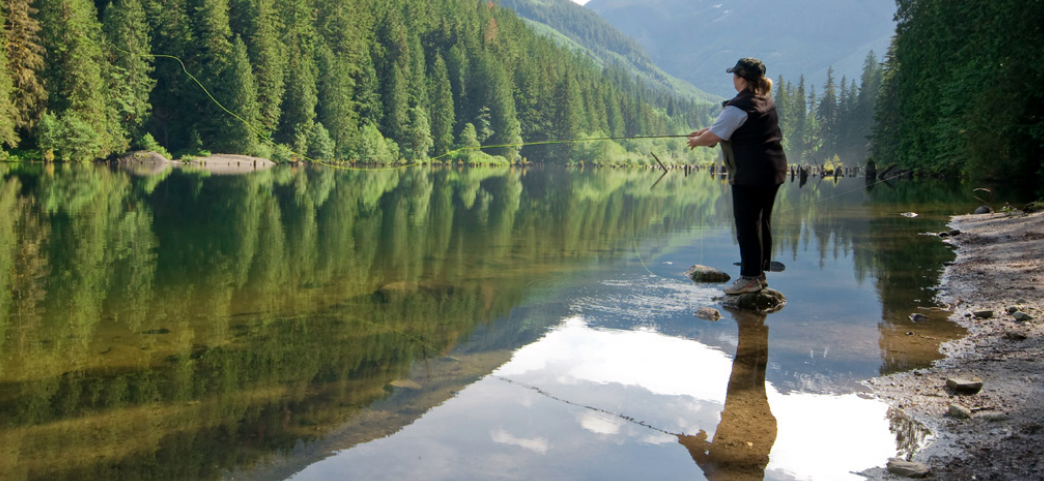Drought, Ecosystem Functions, and Recreation
Drought conditions present challenges for managing recreation opportunities on national forests and grasslands by affecting ecosystem functions that drive demand for recreation. For recreationalists, direct effects of drought are expressed in the reduction of snowpack and runoff, or lower stream flow and water levels in reservoirs and lakes.
The indirect effects include changes in site characteristics and quality, such as changes in vegetation, wildlife habitats, disturbances (e.g., fire or insect outbreak), and unique features (e.g., glaciers). These direct and indirect effects will likely change demand for drought-sensitive recreation.
However, drought also provides opportunities for the evolving and adaptable recreationalist and outdoor recreation industry. For example, ski areas in Colorado have shifted from providing only winter skiing and snowboarding opportunities to becoming all-season resorts that offer a suite of year-round activities.
The following content is from a publication from the Forest Service Office of Sustainability and Climate, the full content can be viewed/downloaded in PDF
Warm Weather Recreation
Warm weather recreation includes activities such as hiking, camping, biking, backpacking, viewing natural features, fishing, and visiting Wilderness areas.
In the Rocky Mountains, snowmelt and spring runoff have been occurring earlier in the spring due to lower snow-water equivalent, warmer spring temperatures, and greater solar absorption from dust on snow (Lukas et al.,, 2014). These conditions create more days without snow and ice, with more suitable temperatures for warm weather recreation.
This shifting shoulder season for warm weather activities may change visitors’ site preferences. As conditions change, people shift where they are recreating based on trail conditions, the presence of unique features (e.g., wildflowers) or smoke from wildfire, and vegetation cover.
| Expected Effects on Warm Weather Recreation | Adaptation Strategies |
|---|---|
|
|
Snow-based Winter Recreation
Snow based winter recreation includes activities such as downhill and cross country skiing, snowmobiling, and snowshoeing. Climate projections predict a decrease in snowpack and viable snow sports seasons, especially at lower and mid elevations (Wobus et al., 2017).
Snow drought will have negative impacts on skiing and snowmobiling. These impacts may include shorter recreation seasons; shifts in activities to higher elevations; decreased recreation use in snow-dominated areas in early and late winter; and new management challenges for ski resorts.
Ski Areas
| Expected Effects on Ski Areas | Adaptation Strategies |
|---|---|
|
|
Trail-based Activities (Cross country skiing, snowmobiling)
| Expected Effects on Trail-based Activities | Adaptation Strategies |
|---|---|
|
|
Wildlife Related Recreation
 Wildlife related recreation includes activities such as hunting, fishing, and wildlife viewing. As drought increases, hunting and fishing patterns may change in response to decreases and increases of wildlife and fish populations.
Wildlife related recreation includes activities such as hunting, fishing, and wildlife viewing. As drought increases, hunting and fishing patterns may change in response to decreases and increases of wildlife and fish populations.
A reduction of cold water fish species (e.g., bull and cutthroat trout) is projected due to warmer stream temperatures, decline in summer flow, and retreat of suitable habitat. Fishing for warm water fish might experience the opposite effect with greater recreational opportunities for brook and rainbow trout, and smallmouth bass fishing.
Drought effects on hunting terrestrial game (e.g., elk, whitetail and mule deer) are uncertain given the pattern of abundance, distribution, and available forage. For mule deer, poor nutrition associated with drought-affected vegetation makes fawns more susceptible to parasites, diseases, and predation (Friggens et al., 2013).
| Expected Effects on Wildlife Related Recreation | Adaptation Strategies |
|---|---|
|
|
This is an excerpt taken from a synopsis of presentations given in a webinar by the Forest Service, with support from the USDA climate hubs, in March 2017. Presentations highlighted the direct and indirect effects of drought and how they affect the demand for recreation activities. The full synopsis is available as a PDF.
References made on this page can be found in full text pdf.

